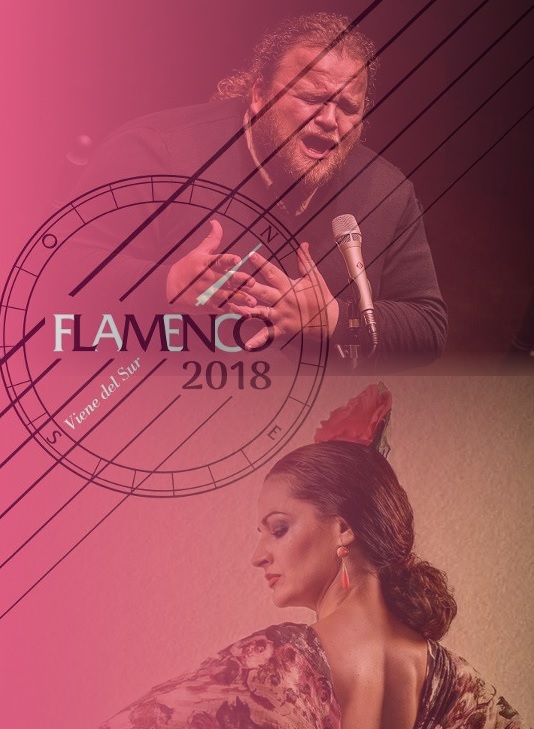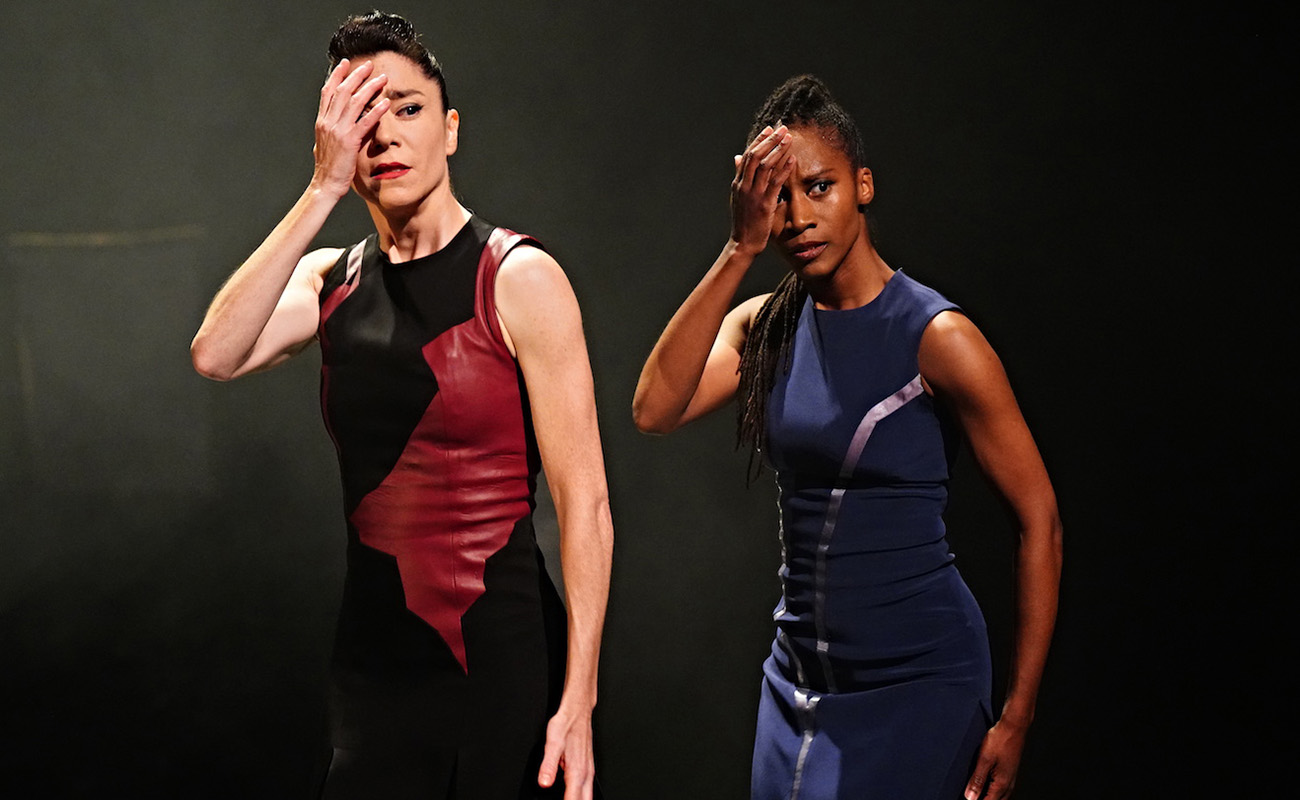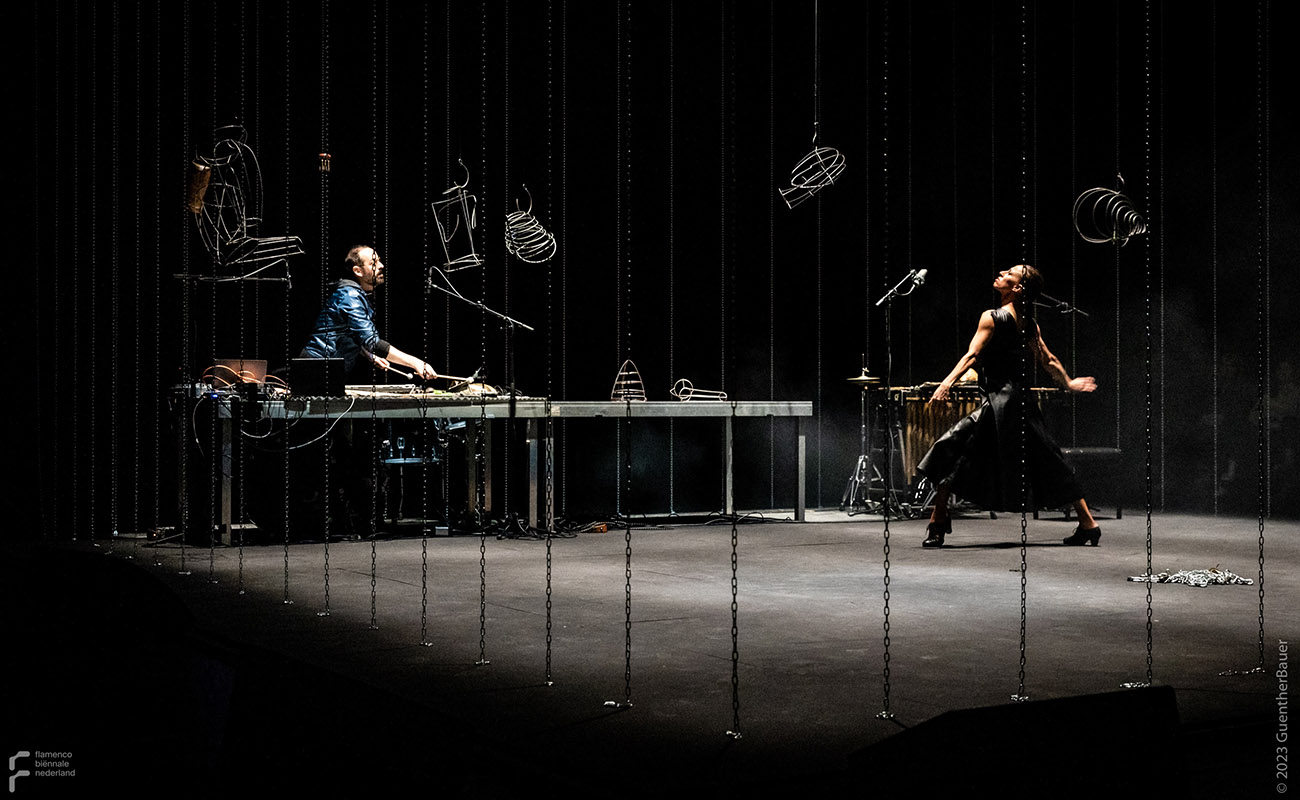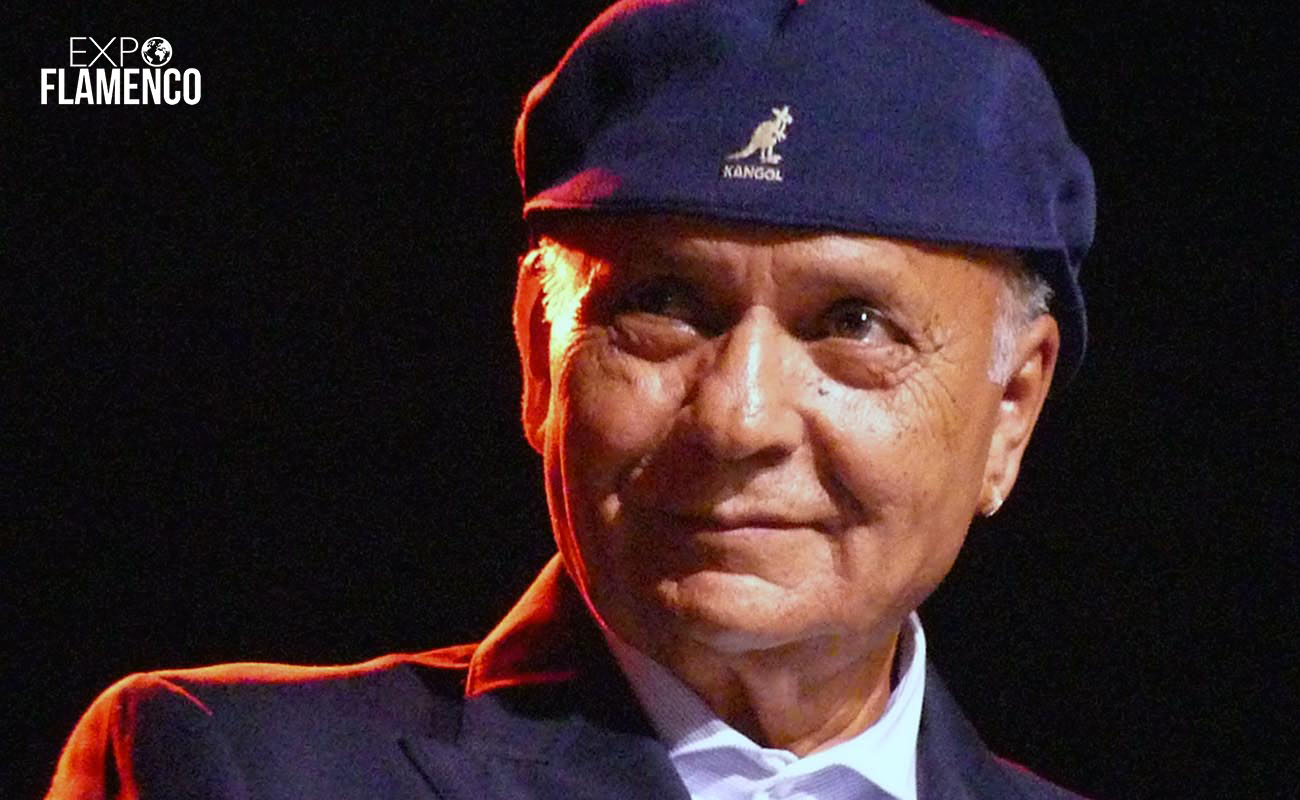Ezequiel Benítez and Adela Campallo, together but not mixed
The cantaor from Jerez and the bailaora from Seville performed in the last show of the series Flamenco Viene del Sur.
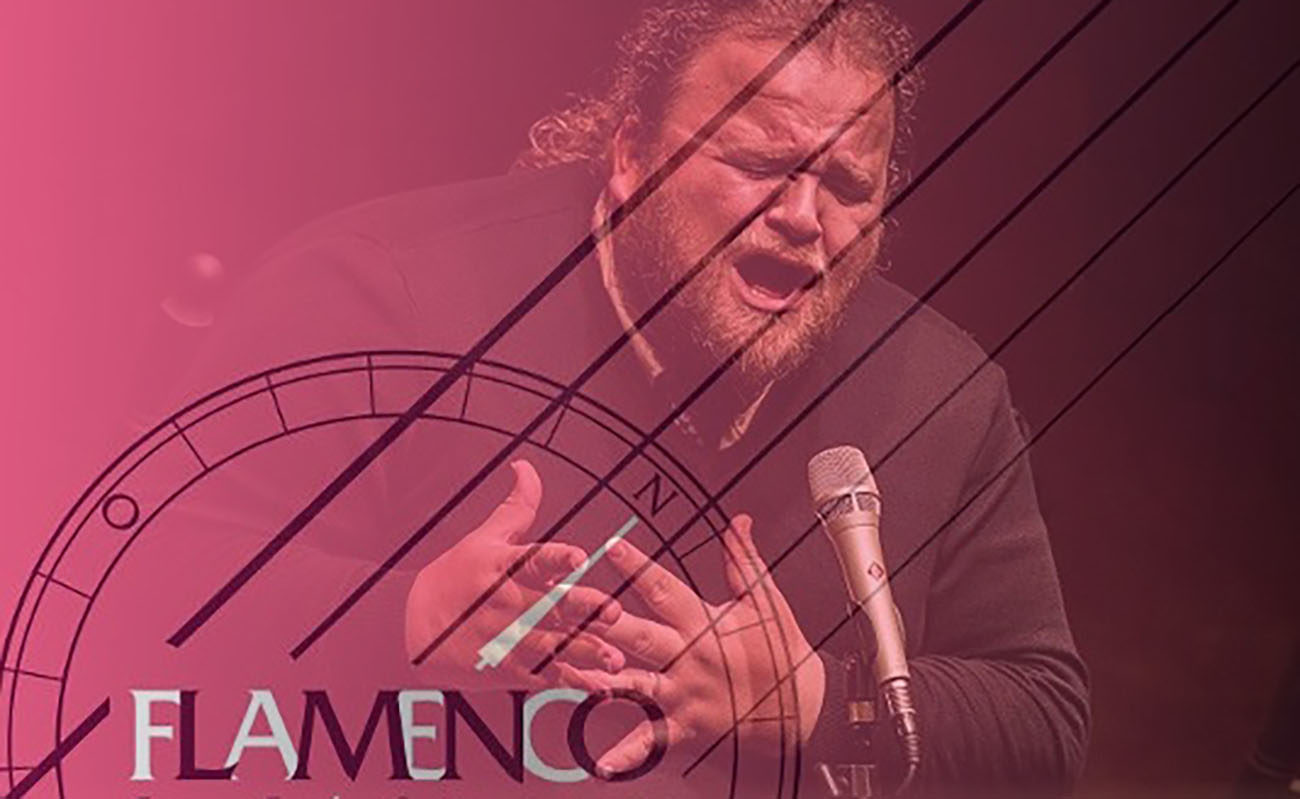
By Luis M. Pérez. Seville, May 17, 2018
At first, it was hard to understand why these two artists didn’t deserve having one evening all for themselves at Seville’s Teatro Central. Ezequiel has already released two albums, more than enough material for the sixty-five minutes that the recitals of the series Flamenco Viene del Sur usually take. Adela needs no introduction, having already produced numerous shows. After we left the theater, it’s not that it was hard to understand, it was completely beyond comprehension, no matter how we looked at it. It wasn’t a matter of the quality of the artists, but rather that each of their publics are interested in different things, because their artistic concepts are completely opposed, although they’re both totally valid. So I guess there was one evening and two artists left. Who is in charge of this programming?
Ezequiel Benítez Domínguez was born in Jerez de la Frontera in 1979, in the famous Santiago district to be precise, in a family which was closely linked to flamenco. Ezequiel has keenly studied cantes and flamenco history, and has created magnificent musical nuances, lyrics and even his own fandangos. The death of his brother, who always accompanied him on palmas, was a turning point in his life, and after living a few years in Cádiz, where he immersed himself in the world of its comparsa carnavalera, he came back to Jerez to become a leading flamenco artist.
Ezequiel wasn’t at his best on Tuesday evening, as anyone who regularly attends his performances could attest. Perhaps because this is the traditional month of alegrías, he started rather nervous por alegrías de Aurelio Sellé, precisely one of the palos where this cantaor of Jerez usually excels. Fortunately he got himself together singing soleares de Jerez, those sung by María Bala in the farmhouses when she was young, although without embellishments like he usually does. Then he soared to heaven chasing María Magdalena, those cuplés por bulerías that the genius from Seville, Manuel Vallejo, recorded around 1935. The palmas of Manuel Cantarote and Juan Diego Valencia sounded glorious, both here and also in the bulerías gitanas that Ezequiel gave out to the public like Gypsy bouquets, finally self-assured and communicating the gallantry of El Chozas de Jerez and La Bolola, interspersing his outstanding fandangos por bulerías. When Ezequiel seeks within his heart, he finds sorrowful moments, and he left us in tears in a corner, with the guitar of Paco León (from Puerto de Santa María) scratching the seguiriyas in memory of his brother.
After a little break just long enough for a pit stop, the curtain was raised yet again, giving us the frightful sight of black flamenco with white polka dots on the floor. Frightful due to its overuse, and because it’s a sign that the baile performance will be impregnated with contemporary dance. While the musicians remain motionless in each of their circles of light, a bailaora typically appears dragging her feet, with an upset face and empty stare, as if defying the audience to guess where this is all going. The cantaores Jesús Corbacho and El Londro reminds us that this is about flamenco, with their leading voices sacrificed to provide background music, together with the inevitable Indian sitar and the emphatic all-encompassing percussion.
After all, baile flamenco did happen: seguiriyas, cabales, romances and corridos, where Adela Campallo, bailaora from Seville, deployed all of her contemporary dance techniques, with plenty of footwork but not so much handwork, dazing the public with her fierce eyes and the fluidity of her movements. Although some of us, leaving the theater and seeking the fresh breeze from the Guadalquivir river, didn’t quite understand the point of the show.
Event notes:
Show: Ezequiel Benítez / Adela Campallo
Series: Flamenco viene del Sur
Place and date: Teatro Central de Sevilla. May 15, 2018First part: Ezequiel Benítez Recital
Cante: Ezequiel Benítez
Guitar: Paco León
Palmas: Manuel Cantarote and Juan Diego ValenciaSecond part: Adela Campallo’s performance
Baile: Adela Campallo
Cante: Jesús Corbacho and Miguel Soto El Londro
Guitarrs: Juan Campallo and David Vargas
Percussion: Paco Vega
